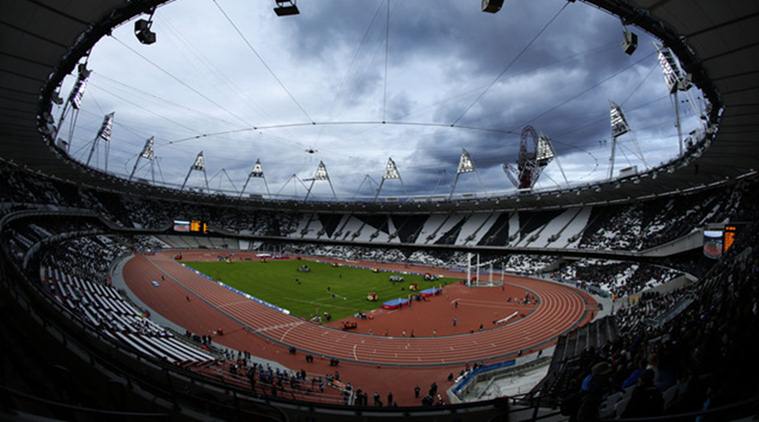Rio 2016 Olympics: Know your sport — Track and Field
The athletics contests include running, jumping as well as throwing in an Oval track with a rectangular grass field in between.
 In the race events, the aim is to outperform the opponents and finish first. Jumping and Throwing event winners will be determined on who achieves the greatest distance or height. (Source: AP)
In the race events, the aim is to outperform the opponents and finish first. Jumping and Throwing event winners will be determined on who achieves the greatest distance or height. (Source: AP)
The 28th edition of the modern Olympic Games will be held in Rio de Janereio from August 5 to 21. Since it first began in Athens in 1896, the Games have seen exponential growth with rise in the number of participating nations and number of athletes. The Games are being hosted in a South American city for the first time. The 2016 Games will see players competing in 41 disciplines from 28 sports. A total of 306 medals are on stake and more than 10, 500 players are participating. The sports at the Games vary from water to track and field and filed events. Each game has a different set of rules and different ways to win a medal. We bring to you a breakdown of each sport.
Sports basics: Track and Fields event, also known as Athletics, works on only one moto. That is to outperform your opponent. Athletics consists of various sporting events and the aim is to always finish first. Track and Fields event made its Olympic debut at Athens 1896 Olympics. The athletics contests include running, jumping as well as throwing in an Oval track with a rectangular grass field in between. The track is for the running and walking sports while the field is used for the jumping and throwing events. The running events include sprints, middle and long-distance events, race walking and hurdling. Regular jumping events include long jump, triple jump, high jump and pole vault, while the throwing events are shot put, weight, javelin, discus and hammer. ‘Combined’ or ‘multi-events’ include Pentathlon, Decathlon and Heptathlon. These events are a combination of sprinting, jumping, throwing, middle distance, and long distance events.
History: The exact date of the origin cannot not be traced. The track and fields can be mapped in human pre-history. There is record of the events in the Ancient Olympic Games in 776 BC in Olympia Greece. Rules and modern track events started to be defined in the 19th Century AD. The events were also organised by educational institutions, military organisations as well as sports clubs.
Scoring format: In the race events, the aim is to outperform the opponents and finish first. Jumping and Throwing event winners will be determined on who achieves the greatest distance or height.
Categories:
Race Categories include: 100m, 200m, 400m, 800m, 1500m, 5000m and 10000m. The two relay events (4x100m and 4x400m), both in men and women category, are contested by a team of four athletes.
Height Jump includes: High Jump and Pole Vault.
Distance Jumps include: Long jump and triple jump
Throwing events include: Discus throw, shot put, Javelin throw and Hammer throw.
Road Events include: Marathon, 20 km race walk, and 50 km race walk, both in the men’s and women’s category, respectively.
Indian contender(s): India have a long list of contenders this years for the Track and Fields event this year. Athletes competing in various categories will boost the chances of winning quite a few medals this year. The players include —— Vikas Gowda (Discus Throw), Seema Antil (Discus Throw), Manpreet Kaur (Shot Throw), Gurmeet Singh (men’s 20km walk) Baljinder Singh (men’s 20km walk), Irfan Kolothum Thodi (men’s 20km walk), Sandeep Kumar (men’s 50km walk), Manish Singh Rawat (men’s 50km walk), Nitender Singh Rawat (Marathon), Thonakal Gopi (Marathon), Kheta Ram (Marathon), Muhammad Anas (400m), Lalita Babar (3000m steeplechase), Tintu Luka (800m), Kavita Raut (Marathon), Sudha Singh (Marathon and 3000m steeplechase), OP Jaisha (Marathon), Khushbir Kaur (Walk), Sapna Punia (Walk), Dutee Chand (100m), Sarbani Nanda (200m), Ankit Sharma (Long jump), and Nirmala Sheoran (400m).
































